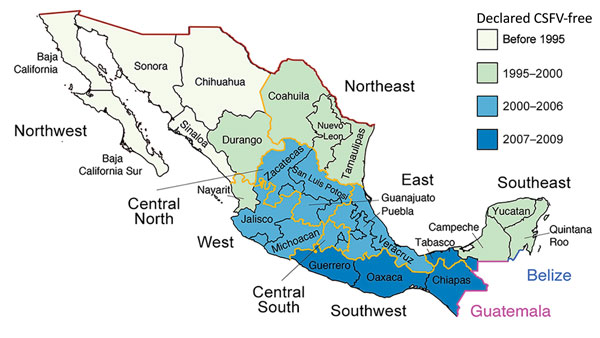Volume 25, Number 4—April 2019
Research
Human-Origin Influenza A(H3N2) Reassortant Viruses in Swine, Southeast Mexico
Figure 2

Figure 2. Swine exportation to Mexico from the United States and eradication of CSFV in Mexico. The 32 states of Mexico shaded according to the year when CSFV was declared to be eradicated by the Secretariat of Agriculture, Livestock, Rural Development, Fishery and Food of the government of Mexico. International borders are shaded between Mexico and the United States (red), Belize (blue), and Guatemala (violet). The 8 regions of Mexico are indicated, and their borders are shaded orange. CSFV, classical swine fever virus.
1Current affiliation: Kansas State University, Manhattan, Kansas, USA.
Page created: March 17, 2019
Page updated: March 17, 2019
Page reviewed: March 17, 2019
The conclusions, findings, and opinions expressed by authors contributing to this journal do not necessarily reflect the official position of the U.S. Department of Health and Human Services, the Public Health Service, the Centers for Disease Control and Prevention, or the authors' affiliated institutions. Use of trade names is for identification only and does not imply endorsement by any of the groups named above.